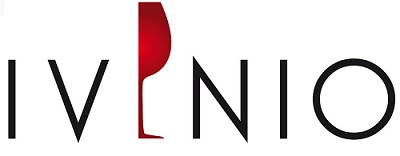
The story about the “Baltic sea champagne” continues
No winelover has probably missed to read about the «Baltic-champagne» found in a shipwreck outside the Åland Islands in 2010. Not less than 168 bottles, of which a larger number still drinkable bottles from the early 1800s were found in the sea at 55 meters depth. The champagne appeared to be well preserved on the seabed – protected from light, at 6 bar's pressure (the same as in the bottle) and at constant water temperature of 4-6 degrees – for 170 years! The champagne came mainly from the champagne house called Juglar (now disappeared since they were bought up by Jacquesson in 1832), but also from Veuve Cliquot and Heidsieck. With help from the winery's own history experts, it has been confirmed that at least the bottles from Veuve Cliquot were completely original and have probably been produced and sold by Madame Cliquot herself! A real bang bang not only winewisely, but also historically. The first bottles went into action sales in Mariehamn in June 2011. One bottle of Veuve Cliquot and one from Juglar was sold for 30,000 €, resp. 24,000 € and were the world's oldest, ever sold champagne.
Since the discovery in 2010, new findings have come to light these days through the PNAS (Proceedings of the National Academy of Sciences of the United States of America), where Philippe Jeandet, professor of biochemistry at the University of Reims and Professor Philippe Schmitt-Kopplin from the University of Munich, on April 20 this year, published from both taste wisely and also purely historically, very interesting findings about the Baltic sea champagne. Philippe Jeandet, who has had the privilege to taste 100 microliter, ie 2 drops, placed on top of his hand through a pipette, describes the wine as very spectacular, perfectly preserved and with aromatic hints of tobacco and leather. Other professional oenologists who had the opportunity to taste more of the wine after it had been aired, describes a «young» fresh taste with floral and fruity elements.
A taste-rate surprise was that the sugar content of the wine was significantly higher than in today's Champagnes. No less than 150 grams of sugar was mesured per liter – or in other words 3 times more sugar than what we find in today's Coca-Cola. This was in the beginning of 1800s the contemporary flavor reference in both France and in Germany. For the Russian nobility, the amount of sugar was even the double, which means 300 g per liter! This fact confirms at least that the champagne found outside Åland didn't have Russia as its final destination. The less sugary champagnes first appeared around 1850 when Americans and Englishmen initiated the trend of less sugar in the wine.
The chemical analysis has also discovered several interesting things:
The first finding is that the champagne contained only 9.5% of alcohol against today's 12.5%. The reason is probably that the climate was cooler at that time and the sugar content of the grapes were therefore lower, yielding a wine with a lower alcohol content.
The chemical composition of the old champagne is very similar to the one we find in today's champagnes and the vinegar content is almost as low. This probably means that the winehouses mastered the vinification method already in the early 1800s and that the technology itself has not changed very much since then.
Further refering to the chemical analysis it can be said that the old champagne contains a great amount of wood substances since the vinification at the time took place in oak barrels. These so-called castaline substance exists today in oakbarrel stored champagnes such as Krug or Bollinger, but not in the more common steel tank stored Champagnes, not least from today's Veuve Cliquot.
The presence of iron in the wine comes probably from the iron containers used for transporting the grape juice and the presence of copper can be exlained by the use of sulfur to combat eventual fungal infections of the vines. In the big picture, and from a pure health aspect, these 170 years old wines are fully serviceable. Those lucky ones who have had the opportunity to taste these treasures have probably experienced an, at least as a wine lover, invaluable tasting marking for life!












